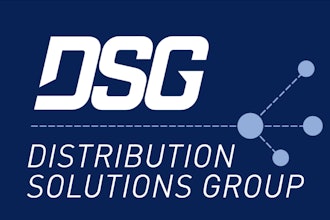
In a world of unpredictable demand, supply chain disruption, and shifting trade policies, distributors can no longer afford to “wait it out.”
According to McKinsey’s “Grow or Go” article, only one in four companies consistently outperform across business cycles. The rest either plateau — or disappear. How will your organization be one of the top 25% that scales profitably in a storm?
Will you be a buffalo or a sheep?
The standout performers — buffalo, if you will? They don’t rely on luck. They make bold, thoughtful moves, especially when conditions are tough. Organizations that grow through storms have one thing in common: they face storms head-on. They write a plan based on data, trends and competencies not gut, intuition or “how we have always done things around here.”
Here’s how distributors can grow in uncertain times and economic storms:
1. Make Growth a Priority — Not a Hope
Many industrial distributors have historically leaned on cost-cutting and operational efficiency to stay afloat during downturns. Most leaders of distribution companies grew up through the ranks of operations or finance, so we should not be surprised with their knee-jerk reaction to uncertain times. That won’t cut it anymore. The distributors I have worked with have already made significant operational efficiencies. In today’s market, only growth-minded companies stay relevant.
Action step: Stop treating growth as a bonus. Make it the core KPI. That means retooling sales strategies, investing in automation or value-added services, and empowering teams to chase new accounts — not just serve existing ones.
2. Reallocate Capital Like a Portfolio Manager
You know which branches, product lines, divisions or regions are stalling, and which ones are poised to grow. You know what salespeople and marketing is delivering the greatest returns today. The best operators don’t hesitate to shift investment, people and focus to what’s working. They make strategic investments to deliver the greatest returns. If you have underperforming salespeople, invest in training and coaching, or coach them out. If you are not sure if your website is the best salesperson in your company , invest in a digital footprint audit and find out.
Run a net profit by customer and profit analysis. Often referred to as the “Whale Curve,” this data will help identify the 20% of key customers delivering 80% of your net income, as well as the 20% of your profit-leaking accounts — the customers you lose money on each time you ship them. This data will also give you the insights to implement strategic pricing.
Action step: Run quarterly business reviews like investment committees. What is your cost of sales today? What customers represent 80% of your net income? Are they satisfied or are you vulnerable to churn? What products and services need updated pricing based on current costs and market values? Where’s the real ROI? Be willing to phase out legacy SKUs, delay low-value expansions, and double down on high-margin or growing verticals.
3. Launch New Offerings Like a Startup
Top industrial performers are building new revenue streams: private-label products, predictive maintenance services, or even adjacent technologies. They’re not just reacting — they’re innovating. Your customers are facing more and new challenges today that can turn into new products and services if you gather the requirements and capture the voice of your customers.
Action Step: Stand up a business-building team inside your organization. Give them a mandate to explore service models (e.g., subscription-based parts supply), product innovations, or expansion into new verticals like renewable energy, modular building, or food manufacturing. Equip your team with current customer insights to help understand and prioritize new offerings based on the top KPIs of your company.
4. Upgrade Your Talent Stack — Especially in Commercial and Digital Roles
Distributors have long focused on operational excellence. But in a margin-pressured world, you need elite talent in sales, digital transformation, and customer experience. When I first led sales teams in the 1990s, we traveled with salespeople to understand who was strong and who needed training, coaching or, in some cases, needed to move to a non-sales role. Unfortunately, with large teams, by the time you gather the insights and write your plan, the data is old.
Today, however, we have tools like a sales effectiveness assessment, where we can assess the sales teams’ skills competencies , beliefs, and motivations in one week and begin acting on the insights the data delivers quickly. We can run a digital footprint audit to determine how strong your digital footprint is compared to your top competitors and gain insights to improve your websites rank and SEO. With 76% of buyers today, based on a Gartner study choosing to self-serve and not engage with salespeople your website must become your top producing salesperson.
Action step: Audit your top 50 roles. Do you have digital fluency in your managers? Are your sales leaders consultative, not transactional? Do your sales managers and leaders have coaching skills? Do your salespeople have sales skills in key areas like prospecting, discovery, qualifying, selling value, consultative selling and closing skills? Is your marketing driving new revenue? If not, start recruiting from outside the industry to bring in new thinking. Prescribe sales training and coaching immediately to help close sales you could be winning today. Align with strong marketing service partners to improve your outcomes like website visits and time on your site. Improve sales from e-commerce and improve your websites’ search rank.
5. Build a Culture that Can Move Fast — Even if You Build Products Slowly
Factories and supply chains take time to change. Training a sales team that has never received sales skills training is at least eight months if not a year. But your commercial and strategic responses don’t have to. Agile isn’t just for tech — it’s for survival.
Action step: Adopt fast-cycle strategy sprints. Every 90 days, reassess your customer pipeline, pricing strategy, customer satisfaction and channel priorities. Empower teams to test pricing models, delivery options, or market entry tactics quickly and with minimal red tape. Quickly assess your team's skills and prescribe training based on need and impact.
6. Know When to Exit the Old to Make Room for the New
Hanging on to outdated product lines, dated value propositions and sales processes or underperforming locations out of habit can slowly bleed you dry.
Action step: Create a “sunset strategy” for products, value propositions and dated sales processes or markets that no longer align with your growth ambitions. Redeploy that capital to automate high-demand lines, enhance customer portals, conduct voice of customer research, and capture the insights you need to strategically update your sales process and messaging or reduce your dependence on volatile import sources. Market leading distributors see the current environment ideal for new acquisitions and have perfected quickly onboarding them.
Lead Like the Cycle Won’t Save You
The next downturn, tariff change or raw material shortage is always around the corner. The distributors who consistently win are those who act like they’re already in a downturn — even when times are good.
Be bold. Be urgent. Be present.
And don’t just weather the cycle — outperform it.
When your competitors, often sheep, turn their backs or hide — implement knee-jerk cost-cutting — you will make decisive moves to grow in the storm and have strong revenue and profit growth in the storm, and when the storm is over.
Mark Allen Roberts is a senior-level sales and marketing leader, author, speaker, sales skills trainer and sales acceleration coach who writes the popular business development blog No Smoke and Mirrors.






















